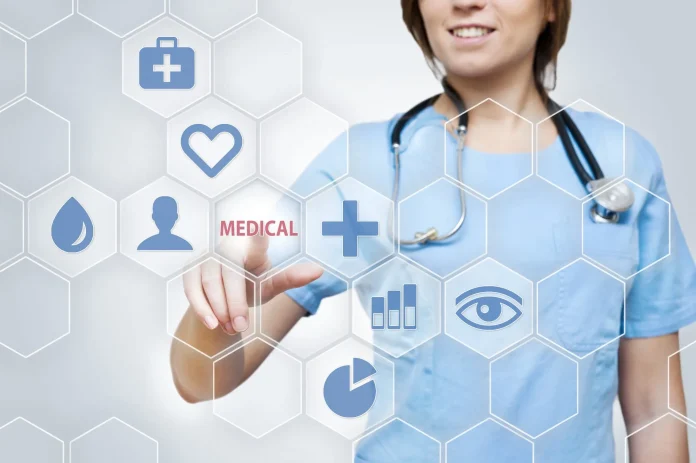Healthcare is undergoing one of the most profound transformations in human history. From how diseases are diagnosed to how patients receive treatment and support, breakthroughs in medicine, digital technology, and public health are reshaping the future of wellness. These changes carry enormous potential—not only to improve patient outcomes but also to make healthcare more accessible, personalized, and proactive.
In this article, we explore the key forces driving innovation in the health and medical fields, the benefits and challenges associated with these shifts, and what the future of care might look like for individuals and communities worldwide.
1. The Rise of Preventive and Personalized Medicine
For decades, healthcare largely operated on a reactive model: patients sought help when symptoms appeared, and doctors treated the condition. Today, however, the industry is shifting toward preventive and personalized medicine, leveraging data and early detection to stop diseases before they progress.
Preventive Medicine: Catching Issues Early
Screening tests, vaccines, genetic analysis, and real-time health monitoring now make it possible to detect diseases earlier than ever. Conditions such as cancer, heart disease, and metabolic disorders benefit significantly from early intervention.
Modern preventive care is supported by:
-
Wearable devices tracking heart rate, sleep quality, oxygen levels, and activity
-
Routine diagnostic screenings, including mammograms, colonoscopies, and blood tests
-
Genetic testing, identifying predispositions to hereditary conditions
-
Lifestyle medicine, encouraging healthier behaviors through education and coaching
This shift allows medical professionals to intervene sooner, reducing long-term complications and healthcare costs.
Personalized Medicine: Tailored to the Individual
Advancements in genomics and molecular biology have enabled doctors to tailor treatments based on a patient’s unique genetic makeup. Rather than applying a “one-size-fits-all” approach, personalized medicine offers more targeted therapies.
Key examples include:
-
Precision oncology, where cancer treatments are chosen based on tumor DNA
-
Pharmacogenomics, predicting how a patient will respond to certain medications
-
Customized treatment plans for autoimmune and chronic conditions
This approach not only improves effectiveness but also minimizes side effects by avoiding treatments a patient may be genetically predisposed to react poorly to.
2. The Digital revolution: Telemedicine and AI-Powered Healthcare
Technology has revolutionized healthcare delivery, especially since the global pandemic accelerated adoption of digital tools. Telemedicine, artificial intelligence, and remote patient monitoring are now essential components of modern medical care.

Telemedicine: Healthcare Anytime, Anywhere
Telemedicine has broken down geographical and logistical barriers. Patients in rural or underserved areas can access medical expertise previously available only in major cities. Virtual appointments also reduce wait times and help chronically ill patients receive regular follow-up care without physically traveling.
Telemedicine supports:
-
Video consultations
-
Remote therapy sessions
-
Digital prescriptions and medication management
-
Online triage and urgent care services
For many patients, particularly those with mobility limitations, chronic illnesses, or busy schedules, virtual care has become indispensable.
Artificial Intelligence: Smarter, Faster Diagnosis
AI systems can analyze vast amounts of medical data in seconds—something impossible for humans alone. This includes interpreting imaging scans, reading lab results, and even predicting disease risks.
Examples of AI in healthcare include:
-
AI-assisted radiology, identifying anomalies in X-rays, CT scans, and MRIs
-
Predictive analytics, helping hospitals anticipate patient surges
-
Natural language processing, organizing patient records and improving workflows
-
AI chatbots, assisting with symptom checking and patient support
While AI does not replace medical professionals, it enhances their ability to provide accurate and efficient care.
3. Mental Health Gains New Recognition
Once heavily stigmatized, mental health is now recognized as a crucial component of overall well-being. Anxiety, depression, burnout, and post-traumatic stress are diagnosed more widely, and access to help is expanding.
Increased Awareness and Reduced Stigma
Educational campaigns, workplace wellness programs, and public discussions have made it easier for individuals to seek help without fear of judgment. This shift is essential, given the rising rates of stress-related disorders.
Digital Mental Health Tools
Technology has also made mental health support more accessible. Apps and online platforms now offer:
-
Guided meditation
-
Cognitive-behavioral therapy (CBT) modules
-
Mood tracking
-
Virtual counseling sessions
-
Peer support communities
These tools allow individuals to receive help early and consistently, even without in-person access to a therapist.
4. Lifestyle Medicine and the Home-Centered Health Movement
Modern healthcare increasingly encourages individuals to take a proactive role in managing their health. Lifestyle medicine emphasizes the importance of:
-
Nutrition
-
Exercise
-
Sleep
-
Stress management
-
Social connection
-
Avoidance of harmful substances
Scientific evidence shows that many chronic diseases—such as type 2 diabetes, cardiovascular disease, and obesity—can be significantly improved or even reversed with lifestyle changes. As a result, wellness programs, fitness technologies, and personalized coaching services are becoming integral parts of the health ecosystem.
Remote Monitoring and At-Home Diagnostics
Home health tools are now more advanced than ever:
-
Digital blood pressure monitors
-
Glucose meters
-
Smart scales
-
Sleep trackers
-
At-home lab test kits
These devices allow continuous health monitoring and help medical providers track patient progress in real time.
5. Challenges: Privacy, Equity, and Accessibility
Despite the tremendous progress, several challenges remain.
Data Privacy Concerns
With digital health comes the need for stronger cybersecurity. Medical data is extremely sensitive, and breaches can have serious consequences.
Healthcare Inequality
Not all communities have equal access to technology, preventive care, or high-quality medical services. Closing this gap is essential to ensure that innovations benefit everyone.
Cost and Infrastructure Barriers
Advanced therapies and digital tools can be expensive, and healthcare systems must find ways to integrate them without overwhelming patients and providers financially.
6. The Future of Healthcare: A Patient-Centered Paradigm
The future of medicine is likely to be defined by:
-
Fully integrated digital records
-
Predictive analytics for disease prevention
-
Personalized care plans based on genetics
-
Global telemedicine networks
-
AI-assisted clinical decision-making
-
Better mental health integration
-
Community-driven public health initiatives
In this evolving landscape, patients will be more informed, empowered, and connected than ever before.

Conclusion
Modern healthcare is entering a new era shaped by technological innovation, personalized treatment, improved mental health support, and a stronger focus on prevention. While challenges remain—particularly in equity and data security—the direction is clear: a more proactive, patient-centered system that supports individuals not just in illness, but throughout their entire journey toward lifelong wellness.
If you’d like, I can also format this article for SEO, add headlines, insert keywords, or write another article in a specific sub-niche of health/medical.




